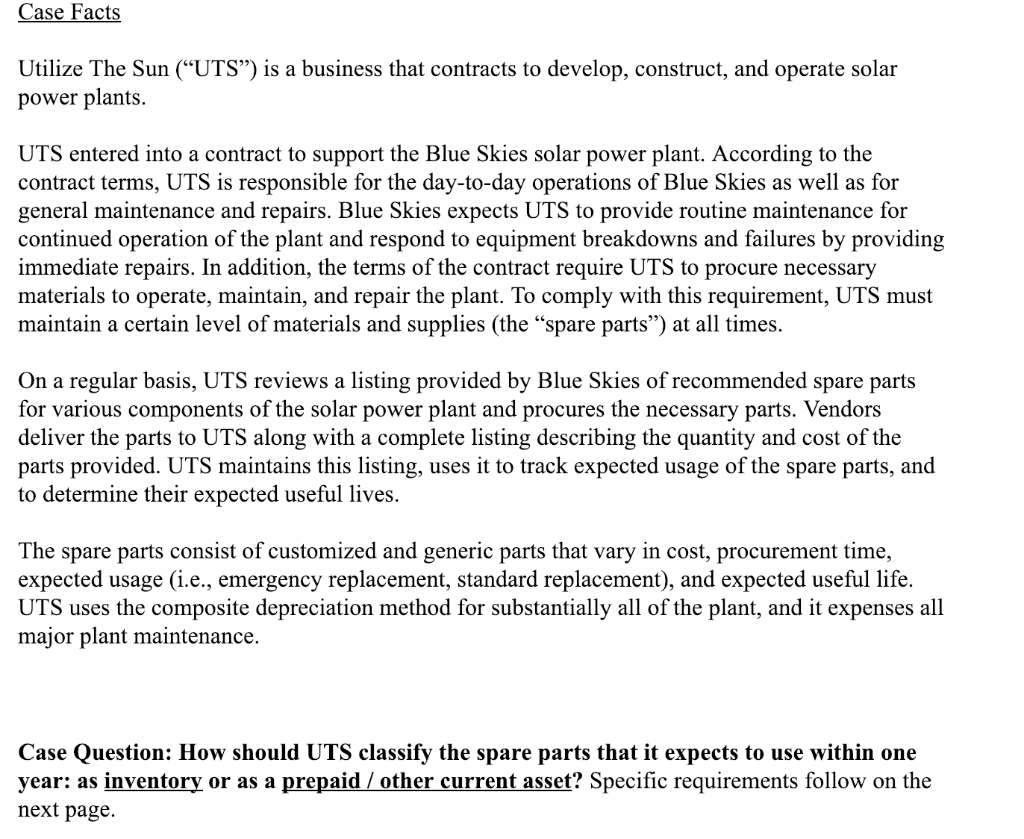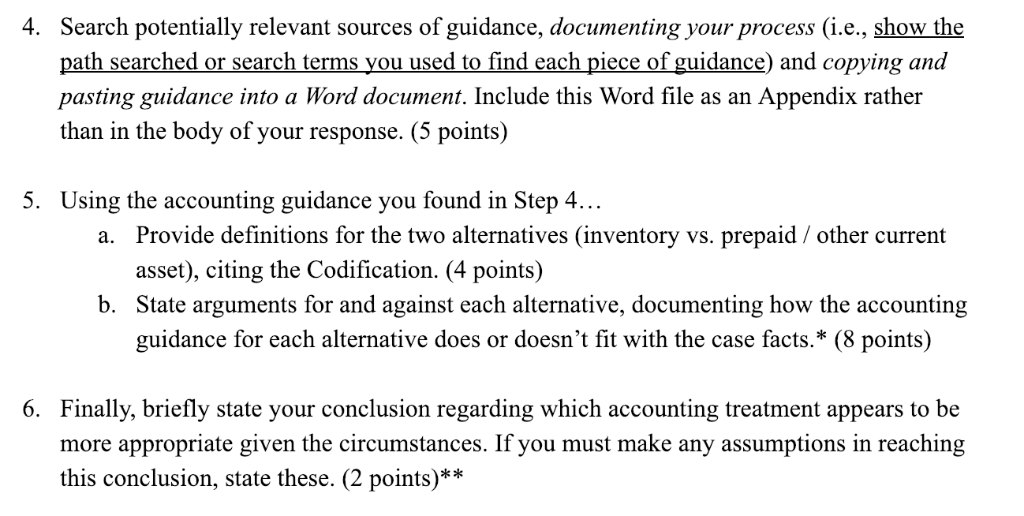

Case Facts Utilize The Sun ("UTS") is a business that contracts to develop, construct, and operate solar power plants. UTS entered into a contract to support the Blue Skies solar power plant. According to the contract terms, UTS is responsible for the day-to-day operations of Blue Skies as well as for general maintenance and repairs. Blue Skies expects UTS to provide routine maintenance for continued operation of the plant and respond to equipment breakdowns and failures by providing immediate repairs. In addition, the terms of the contract require UTS to procure necessary materials to operate, maintain, and repair the plant. To comply with this requirement, UTS must maintain a certain level of materials and supplies (the "spare partsaal times. On a regular basis, UTS reviews a listing provided by Blue Skies of recommended spare parts various components of the solar power plant and procures the necessary parts. Vendors deliver the parts to UTS along with a complete listing describing the quantity and cost of the parts provided. UTS maintains this listing, uses it to track expected usage of the spare parts, and to determine their expected useful lives The spare parts consist of customized and generic parts that vary in cost, procurement time, expected usage (i.e., emergency replacement, standard replacement), and expected useful life UTS uses the composite depreciation method for substantially all of the plant, and it expenses all major plant maintenance. Case Question: How should UTS classify the spare parts that it expects to use within one year: as inventory or as a prepaid / other current asset? Specific requirements follow on the next page 4. Search potentially relevant sources of guidance, documenting your process (i.e., show the path searched or search terms you used to find each piece of guidance) and copying and pasting guidance into a Word document Include this Word file as an Appendix rather than in the body of your response. (5 points) 5. Using the accounting guidance you found in Step 4 Provide definitions for the two alternatives (inventory vs. prepaid/other current asset), citing the Codification. (4 points) State arguments for and against each alternative, documenting how the accounting guidance for each alternative does or doesn't fit with the case facts.* (8 points) a. b. Finally, briefly state your conclusion regarding which accounting treatment appears to be more appropriate given the circumstances. If you must make any assumptions in reaching this conclusion, state these. (2 points)** 6. Case Facts Utilize The Sun ("UTS") is a business that contracts to develop, construct, and operate solar power plants. UTS entered into a contract to support the Blue Skies solar power plant. According to the contract terms, UTS is responsible for the day-to-day operations of Blue Skies as well as for general maintenance and repairs. Blue Skies expects UTS to provide routine maintenance for continued operation of the plant and respond to equipment breakdowns and failures by providing immediate repairs. In addition, the terms of the contract require UTS to procure necessary materials to operate, maintain, and repair the plant. To comply with this requirement, UTS must maintain a certain level of materials and supplies (the "spare partsaal times. On a regular basis, UTS reviews a listing provided by Blue Skies of recommended spare parts various components of the solar power plant and procures the necessary parts. Vendors deliver the parts to UTS along with a complete listing describing the quantity and cost of the parts provided. UTS maintains this listing, uses it to track expected usage of the spare parts, and to determine their expected useful lives The spare parts consist of customized and generic parts that vary in cost, procurement time, expected usage (i.e., emergency replacement, standard replacement), and expected useful life UTS uses the composite depreciation method for substantially all of the plant, and it expenses all major plant maintenance. Case Question: How should UTS classify the spare parts that it expects to use within one year: as inventory or as a prepaid / other current asset? Specific requirements follow on the next page 4. Search potentially relevant sources of guidance, documenting your process (i.e., show the path searched or search terms you used to find each piece of guidance) and copying and pasting guidance into a Word document Include this Word file as an Appendix rather than in the body of your response. (5 points) 5. Using the accounting guidance you found in Step 4 Provide definitions for the two alternatives (inventory vs. prepaid/other current asset), citing the Codification. (4 points) State arguments for and against each alternative, documenting how the accounting guidance for each alternative does or doesn't fit with the case facts.* (8 points) a. b. Finally, briefly state your conclusion regarding which accounting treatment appears to be more appropriate given the circumstances. If you must make any assumptions in reaching this conclusion, state these. (2 points)** 6








